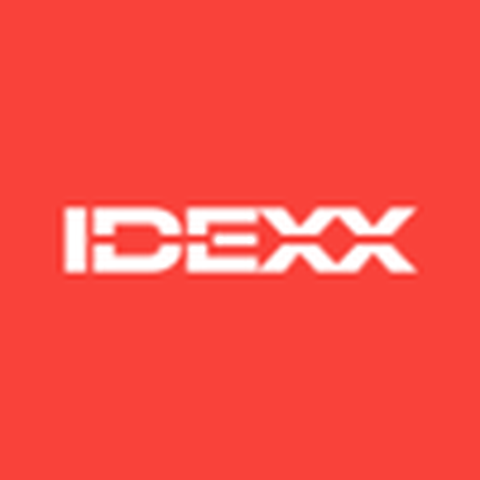IDEXX Newsletter
Couldn't join us for Cornerstone training at VMX or WVC this year? You're in luck: we've compiled a list of the most popular tech tips we shared in our user groups and at the IDEXX Software Learning Lab. So, if you've got questions about keyboard shortcuts, the daily planner, manual lab result entry, compliance alerts or inventory, we've got answers!
Keyboard shortcuts:
Other than F2, here are other shortcuts that had user group participants scribbling notes over:
F1: Cornerstone help that is context-sensitive and opens up with relevant information based on what window you have open in Cornerstone.
F7: Search for someone when you're on a client or patient list; F7 goes backwards through recently accessed records at your workstation. Helpful when you step away for a moment, and someone used your computer while you were gone!
F8: Moves forward on client and patient records accessed. The number of accessed records can be set under Controls > Defaults > Practice and Workstation > Client as well as Patient
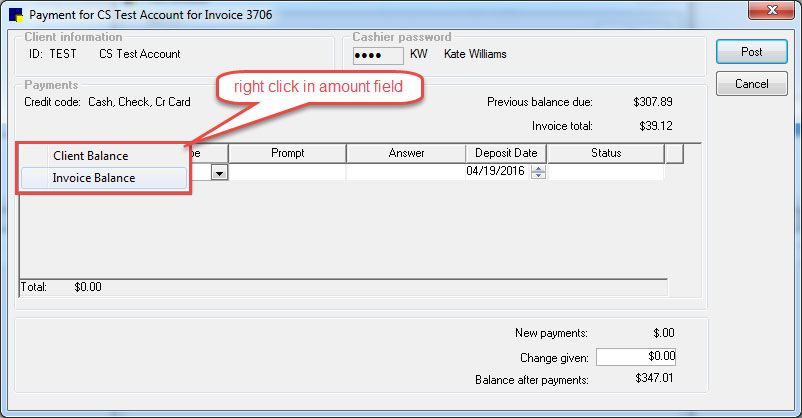
Daily Planner:
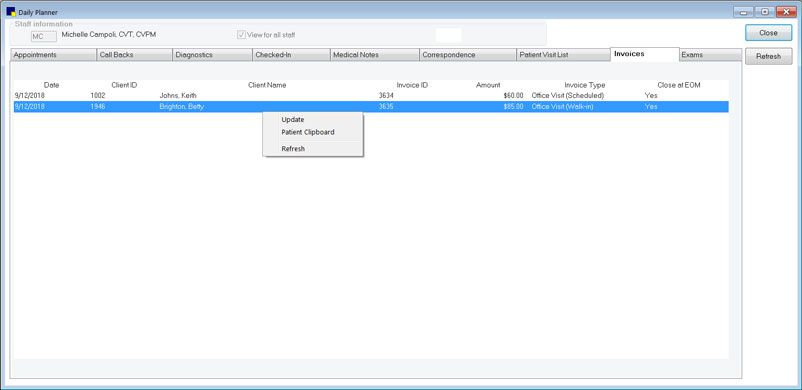
For more information on invoice types, go to Controls > Invoice Types and press F1!
Manual lab result entry
Since Cornerstone 8.7 NEXT, the right-click> lab menu on the Patient Clipboard enables quick entry of lab results into the patient record that typically do not go through an analyser (glucometer glucoses, faecal floats, etc.) While the functionality can still be accessed under the original Activities > Lab work pathway, it is fewer clicks and more accurate from the Clipboard's right-click patient menu.
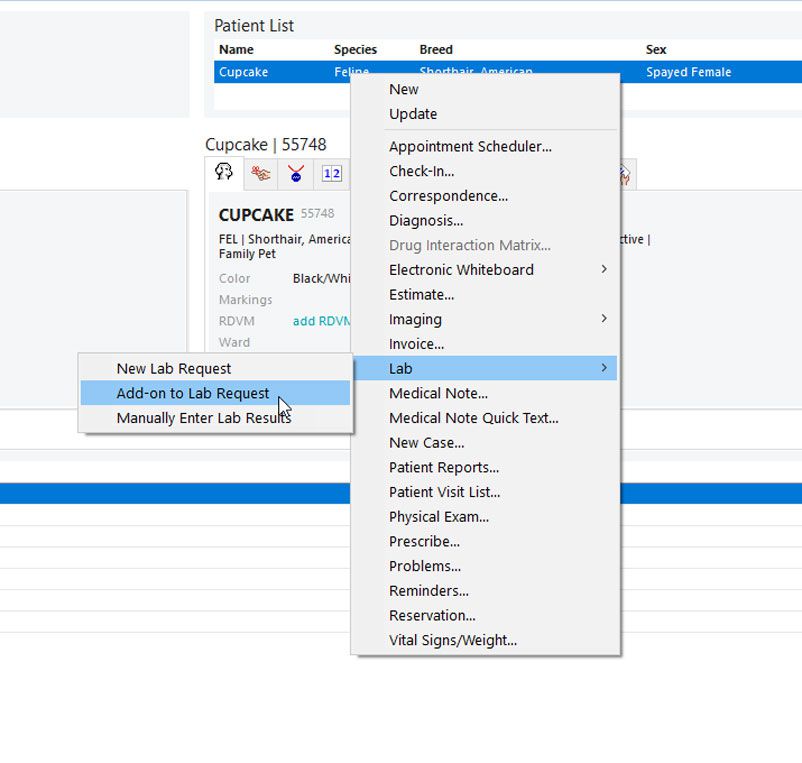
-
Create lab age ranges (
Lists > Species) -
Create lab templates (
Activities > Lab Work > Templates) -
Create default-test ranges per species, age-range, and template (
Activities > Lab Work > Default Test Ranges)
Compliance Alerts
Controls > Defaults > Practice and Workstation > Alerts > Compliance alerts
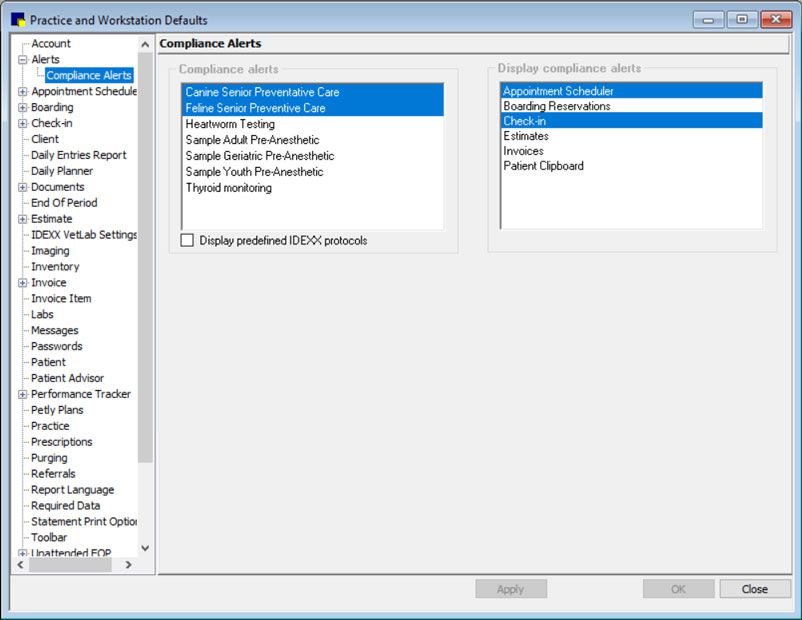
Inventory
Keeping up with inventory is a common challenge. To keep quantity, cost, and associated inventory reports as accurate as possible before the close of each month:
- Post client invoices (to capture inventory sales information, drive COGS report)
- Post inventory receipts (to keep cost and quantity on hand up to date, drive turnover report)
- Ensure correct cost entered per received unit of measure (UOM)
- Ensure correct quantity at correct UOM entered
- Use of special pricing to maintain accurate vendor and average costs
- Complete other inventory tasks: internal usage, return to vendor, confirm adjustments and transfers.
- Spot check top 20% of items sold, adjust quantity and cost as needed after all inventory transactions completed
- Quantity or cost if off more than 1-2 times on an item, review your setup, then workflow to get back on track.
And final inventory tip: Print your Inventory Cost report (or save to file, print to PDF) at the end of each month to have a historical record in addition to the end of year (EOY) PDF that saves with EOY processing in the CSTONE/Share folder.

